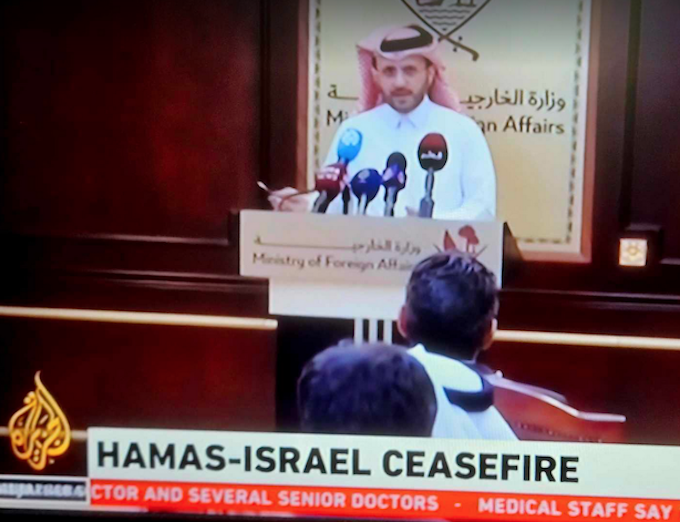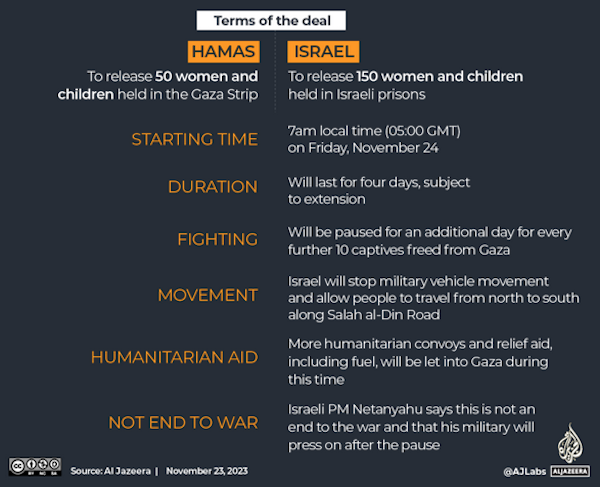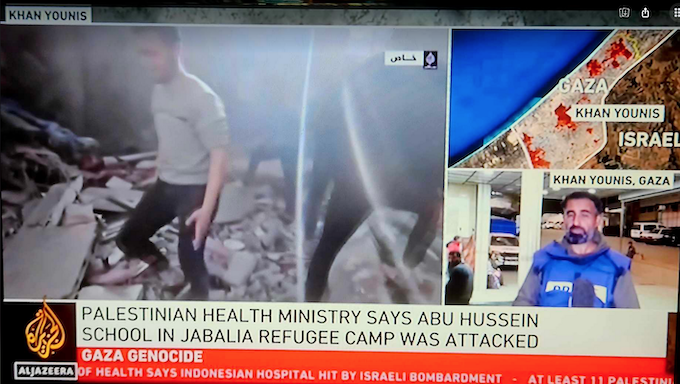ANALYSIS: By Mouin Rabbani
In the early hours of November 22, Qatar formally announced that an agreement had been reached for an Israeli-Palestinian exchange of captives — and it came into force today.
The available details suggest it largely reflects the proposal offered by Hamas several weeks ago that was initially rejected by Israel.
Тhe announcement was made just a week after Israeli tanks and soldiers stormed into the al-Shifa Hospital compound in Gaza City, causing international outrage.
Israel had claimed that there was a Hamas command centre there and repeatedly vowed to destroy it. As it happened, the only facility to be found within the compound was a hospital.
The United States fully supported Israel’s violation of al-Shifa’s sanctity and even claimed it had independent intelligence about a Palestinian Pentagon beneath it but produced no evidence in support of this assertion.
At the time, this led to speculation that these events may have been the product of an informal US-Israeli agreement: The Biden administration would support Israel’s seizure of al-Shifa and would cover for this war crime politically and diplomatically with lies of its own, thus allowing an Israeli military with few achievements since October 7 to have its “Iwo Jima moment” atop “Mount Shifa”.
But once it would become clear that there was nothing of military significance within the premises, the US would proceed to finalise a deal with Hamas and Israel would have to agree to its implementation.
Deal largely the Hamas offer
It does indeed appear to be the case that in exchange for US support for Israel’s systematic destruction of the health sector in the Gaza Strip, a deal with Hamas has been reached.

The agreement is significant in several respects. Perhaps most importantly, the US and Israel, which repeatedly vowed to eradicate Hamas, are now negotiating with the Palestinian movement and reaching agreements with it.
Qatari-Egyptian mediation, while indispensable, is ultimately a formality. The US and Israel are not negotiating with Egypt and Qatar but with Yahya Sinwar, the head of Hamas in the Gaza Strip and architect of the October 7 attacks.
The tenor of Israeli press reports in recent days has been that Hamas is desperate for a respite, however brief and at almost any price, from the ferocious Israeli onslaught against the Gaza Strip.
Yet the available reports about the deal suggest otherwise:
- Israel has committed to releasing three times as many imprisoned women and children as the Palestinians;
- No Israeli soldiers are included in the exchange;
- Significantly more humanitarian supplies, including fuel, will reach the Gaza Strip;
- The exchange of captives will be implemented during a continuous four-day truce rather than one in which the slaughter is paused for a brief period each day; and
- Israeli jets and drones will be prohibited from using the airspace over the Gaza Strip for several hours each day.
Why are so many Palestinians imprisoned?
This is quite close to the deal initially offered by Hamas several weeks ago, and it appears the bulk of its demands have been conceded by Israel and the US.
If the adage that negotiations reflect reality on the ground rather than overturning it applies, Hamas — in contrast to the Palestinian population of the Gaza Strip, which has been Israel’s main target — seems far from desperate.
Instead, it appears sufficiently confident to stick to its priorities until these are accepted by the US and Israel.

US, Israel forced to concede
“Pursuant to the agreement, Hamas has also forced the US and Israel to consent to the supply of large amounts of essential humanitarian supplies to the Gaza Strip.
In other words, Hamas has in one fell swoop achieved exponentially more on the humanitarian front than the much-vaunted US diplomacy to secure humanitarian relief for Gaza’s Palestinian civilians during the past month.
This confirms that the entire US effort was in essence a circus — a diversionary charade to enable Israel to continue with its mass killings and transform the Gaza Strip into a wasteland and a killing field.
It bears repeating that Hamas has forced the US and Israel to allow significant quantities of food, water, medicine and fuel to reach the civilian population of the Gaza Strip.

Yet Hamas is the anointed terrorist organisation in this equation while Israel is the light unto nations with the world’s most “moral army” and the US is the world’s greatest democracy dedicated to spreading freedom and human rights to the rest of the planet.
What happens next is difficult to assess. According to reports, only Israeli and dual nationals are to be released, presumably to help the Israeli leadership swallow this very bitter pill and to allay Israeli concerns that the release of foreign nationals would be privileged in negotiations with Hamas.
Yet by insisting on this formula, Israel has ensured that further negotiations to release foreign citizens would continue, potentially leading to an extension of the truce.
War in Israeli PM’s interests
At the same time, it is difficult to believe that the Israeli leadership can accept a temporary truce that metamorphoses into an indefinite one. It is clearly in the Israeli premier’s personal and political interest to keep this conflict going while the security establishment is also desperate to wipe away the stain of October 7.
Other members of Israel’s governing coalition partners see this war as a golden opportunity to unleash the apocalypse and want it to escalate further rather than wind down.
Although the Gaza Strip has been substantially destroyed, Hamas has yet to be significantly degraded, and the Israeli army has yet to kill more Hamas commanders than United Nations staff.
If Israel is confident it can once again flout US policy without consequences, it will. This could take the form of sabotaging the truce or resuming hostilities to ensure it is not extended. Farther afield, the Israeli-Lebanese front also seems to be rapidly heating up.
So further escalation is likely, but it is also possible that the implementation of this deal could cause Prime Minister Benjamin Netanyahu’s government to collapse under a combination of public pressure and internal conflicts among leaders who mutually detest and distrust each other.
The US leadership is also a question mark. With respect to the impact of this crisis on US interests in the region and beyond and particularly the question of regional escalation, US President Joe Biden appears not to care, Secretary of State Antony Blinken appears not to know while CIA Director William Burns and Defence Secretary Lloyd Austin look mortified.
Which faction gains the upper hand remains an open question.
The one conclusion that can already be drawn is that the various “day after” scenarios produced by the Washington echo chamber can be safely discarded because they uniformly require the eradication of Hamas and not negotiated agreements with it.
Mouin Rabbani is a co-editor of Jadaliyya and non-resident fellow at the Center for Conflict and Humanitarian Studies in Doha, Qatar.
Article by AsiaPacificReport.nz








